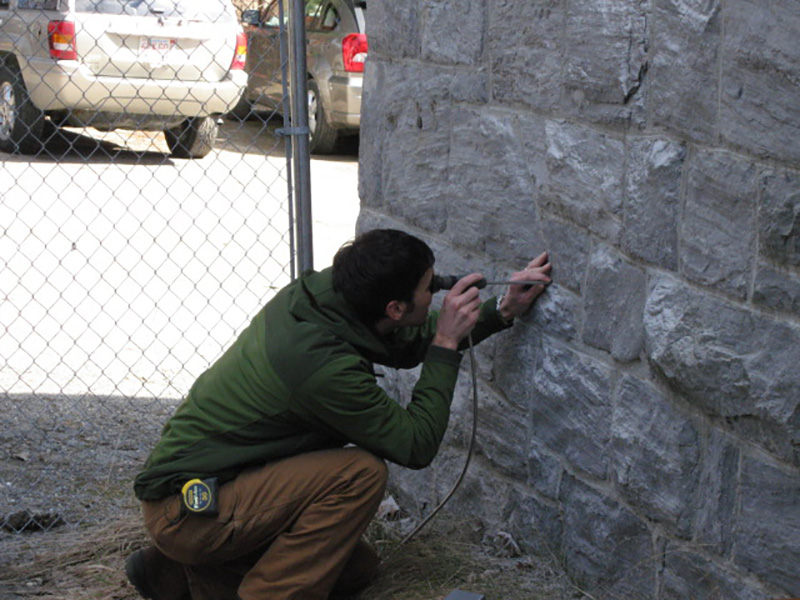Saint James Place




Challenge
A deconsecrated Episcopal church, St. James Place was built in 1857 of blue dolomite limestone, with other structures—including a memorial bell tower and a parish hall—added during the early 20th century. A localized portion of the west elevation collapsed in 2008, leading to its 2010 closure and condemnation. New building owners were concerned with the stability of existing walls. Because of the church’s historic significance, any repair methods would need to strengthen the masonry walls without changing their appearance.
Solution
Atkinson-Noland & Associates started by surveying the exterior conditions of the church. We then used surface-penetrating radar to identify internal wall void structure and to locate bond stones. Borescope analysis allowed us to evaluate internal wall construction on all four elevations and at the bell tower. These investigations provided detailed information about the building’s present condition and material properties. This data also guided design of compatible injection fill (CIF), a specialized grout used to fill the large voids found within the stone masonry. In addition, removal of interior finishes revealed significant mortar deterioration on the inside face of rubble walls. These surfaces, which would be covered with new finishes, were heavily pointed before injection.
Solutions Provided
A fiber-optic borescope is inserted in small holes drilled into mortar joints to evaluate internal wall conditions. Borescope investigations provide detailed information about internal wall features discovered through nondestructive evaluation. These surveys can also evaluate corrosion of embedded metals and continuity of brick header courses. Borescope analysis can reduce or eliminate the need for destructive probe openings.
Compatible injection fill (CIF) is customized to the material properties of the host structure, based on nondestructive evaluation and materials characteristics testing. Technicians pump a fluid, cement-based grout mixture into cracks, voids, or cavities within masonry. Low injection pressures prevent damage, while strengthening already fragile materials.
A visual condition survey locates and identifies areas of damage and deterioration. Dilapidation, cracks, signs of movement, and other localized failures are mapped and documented on drawings to help determine scope of required repair work. Significant structural cracks are measured for size, location and directionality, where accessible. In addition, sources of deterioration and likely causes of damage are identified, along with repair recommendations, as applicable.
Structural analysis characterizes the structural response when subjected to a variety of conditions and actions, such as changing environmental conditions, new load requirements, etc. This assessment involves evaluating a structure under stress, deformation and displacements, and reactions. Nonlinear analysis through finite element (FE) modeling can be used to pinpoint the source of excessive stress leading to damage of the structure (e.g., cracking in tension, crushing in compression) when evaluated under service and ultimate load ranges.
Surface-penetrating radar (SPR), also referred to as ground-penetrating radar or impulse radar, provides valuable information about structural and non-structural building components without causing damage. The radar data reveals voids, construction layers, and the presence of other materials, such as metal inclusions, as well as the thickness of the element.
Result
Grout injection stabilized and anchored the masonry walls of the historic church, confirmed by post-injection testing. Saint James Place reopened its doors in January 2017 as a home for small and mid-size arts groups in need of performance, rehearsal, and office space.
Project
Saint James Place
Great Barrington, Massachusetts
Client
John G. Waite Associates
Albany, New York
Partner
Masonry Solutions International

